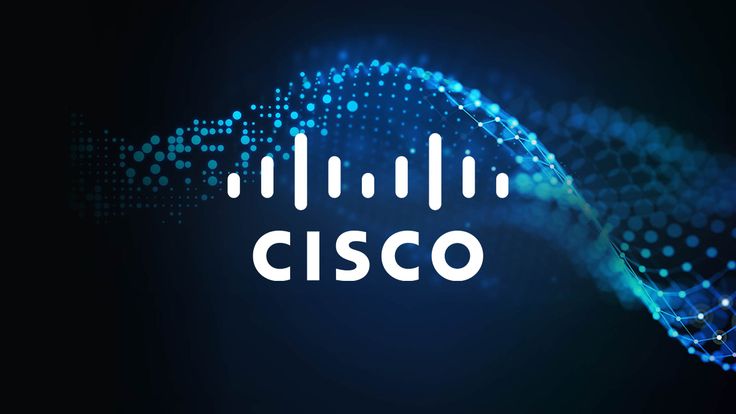🌍 Foundation of Global Connectivity: Cisco’s Philosophy and Historical Journey

The role played by Cisco Systems in laying the foundation for global connectivity is a chapter in the history of the internet that has played a key part in shaping the modern digital world. The journey of this company is so deeply intertwined with the evolution of the internet that the story of one feels incomplete without the other. Cisco was founded in 1984 by a Stanford University couple, Leonard Bosack and Sandy Lerner, initially to solve a simple problem: this couple wanted to solve the communication issue between different departments of the university, for which they developed a multi-protocol router. This was the first idea that would later lay the foundation for the entire world’s digital connectivity.
In its early days, Cisco’s primary work was to establish network connections between universities, research centers, and business institutions. At that time, the internet was merely an academic and research project called ARPANET, and its users were limited. Cisco’s routers began the work of interconnecting the different networks of that era, opening new possibilities for networking. Gradually, as the internet developed, the demand for Cisco’s equipment also increased. In the 1990s, when the internet began to spread publicly, Cisco fully grasped this opportunity and started adapting its products for every sector.
During this period, Cisco not only developed routers and switches but also began working on network security, voice and video communication, and data center solutions. A significant turning point in Cisco’s growth was its Internet Operating System, used in all its devices; this system simplified network management and configuration. Over time, Cisco expanded its product line through the acquisition of several companies, including LAN switch maker Crescendo Communications, voice and video conferencing specialist WebEx, and security solutions provider IronPort.
🔄 Network Infrastructure: The Revolutionary Role of Routers and Switches
Cisco’s routers and switches are, in fact, the heart and brain of global networking, managing and controlling the flow of data. These devices provide the foundation upon which modern digital society stands. The primary function of routers is to deliver data packets between different networks to their destination; they essentially function like traffic police of the digital world, directing each packet onto its correct path. The technology used in Cisco’s routers has continuously evolved over time; early routers operated on basic routing protocols, while today’s Cisco routers support advanced routing techniques like OSPF, BGP, and EIGRP.
The processing power, memory, and port density in these routers have gradually increased, enabling them to handle more and more data. On the other hand, switches control the flow of data within the same network; they manage internal network traffic. There are different types of Cisco switches, including core switches, distribution switches, and access switches, each with a specific function. Core switches are designed for high-speed data transfer, while access switches connect end users to the network. Cisco has introduced numerous innovations in switching technology, including features like multilayer switching, virtual LANs, and quality of service. The performance and reliability of these devices have given Cisco a standard status in the industry.
A feature of Cisco routers and switches is their scalability and flexibility; everyone from small businesses to large corporate networks can use Cisco equipment according to their needs. The operating system used in these devices, namely Cisco IOS, is a powerful and flexible system that provides extensive control to network administrators. A key beauty of Cisco devices is their interoperability; they can work together with other vendors’ equipment, creating harmony between different networks. The coordination between routers and switches affects the overall performance of the network; Cisco has presented integrated solutions for this.
🛡️ Cybersecurity: The Army of the Digital World
Cisco’s contribution to the cybersecurity sector has played a vital role in securing the digital world. Cisco’s approach has always been end-to-end security, aiming to protect every point of the network from potential threats. Cisco’s security products include firewalls, intrusion prevention systems, virtual private networks, and security management solutions. Firewalls act as a protective barrier between the internal and external network; Cisco Adaptive Security Appliances are the best example of these, capable of stateful inspection and application awareness. Intrusion prevention systems detect and block malicious traffic entering the network; Cisco’s IPS solutions have real-time threat detection and prevention capabilities.
Virtual private networks provide secure remote access; Cisco’s VPN solutions include site-to-site VPNs and remote access VPNs that protect data through encrypted tunnels. Cisco’s security management solutions, like Cisco Security Manager, simplify the implementation and monitoring of security policies across the network. Cisco has also done significant work in the field of threat intelligence; its Talos intelligence group analyzes cyber threats worldwide and provides protection to Cisco customers. In the field of email security, Cisco’s solutions protect against spam, phishing, and other email-based attacks. For web security, Cisco’s solutions provide protection against malicious websites and content.
In the field of endpoint security, Cisco’s solutions secure desktops, laptops, and mobile devices. For cloud security, Cisco’s solutions protect cloud infrastructure and applications. A key feature of Cisco’s security products is their integration capability; different security components work together to form a comprehensive defense system. Cisco has presented solutions for implementing zero-trust architecture, which verifies every access request. In the security sector, Cisco’s training and certification programs have trained numerous professionals.
☁️ Data Center Revolution: The New Era of Cloud
Cisco’s data center solutions have played a key role in shaping modern computing infrastructure; these solutions are unique in terms of scalability, flexibility, and efficiency. Cisco Unified Computing System provides an integrated platform that combines computing, networking, and storage resources. In the field of data center networking, Cisco’s solutions provide high-speed connectivity and low latency. Through application-centric infrastructure, Cisco has simplified data center operations. Cisco’s hyperconverged infrastructure solutions have revolutionized data center management. In the field of cloud management, Cisco’s solutions help manage hybrid cloud environments. For data center security, Cisco’s solutions provide micro-segmentation and advanced threat protection. Through automation and orchestration, Cisco has made data center operations efficient.
The performance of Cisco’s data center solutions has made them an essential part of enterprise IT. In financial services, Cisco’s data center solutions have made high-frequency trading possible. In healthcare, Cisco’s data center solutions have simplified the management of electronic health records. In education, Cisco’s data center solutions have supported online learning platforms. In government, Cisco’s data center solutions have made the delivery of digital services possible. In service providers, Cisco’s data center solutions have made the provision of cloud services efficient. The continuous development of Cisco’s data center solutions has played a key role in the transformation of digital business.
📞 Unified Communications: Voice and Video Communication
Cisco’s voice and video communication solutions have revolutionized modern communication methods; these solutions make business communications efficient and effective. Cisco Unified Communications Manager integrates different communication mediums. Video conferencing systems have made remote meetings a real experience. Collaboration tools have increased teamwork and productivity. Contact center solutions have improved customer service quality. Voice over IP solutions have replaced traditional telephone systems. The versatility of Cisco’s collaboration solutions has made them useful in various industries.
In healthcare, telemedicine solutions have made remote consultations possible. In education, virtual classrooms have made distance learning effective. In business, video conferencing has made global meetings efficient. In government, digital communications have made public services accessible. In emergency services, communication systems have improved crisis response. The technical features of Cisco’s collaboration solutions have made them an industry leader. High-definition video has made visual communication clear. Audio quality improvements have made verbal communication crisp. Integration capabilities have ensured compatibility with existing systems. Security features have protected confidential communications.
🏢 Business Solutions: Enterprise Networking
Cisco’s enterprise networking solutions have played a key role in the digital transformation journey of business organizations; these solutions provide scalability, security, and performance. Campus networking solutions have enabled connectivity in large business premises. Branch networking solutions have connected remote offices to the central network. Wireless networking solutions have provided flexible connectivity. Software-defined access has made network management easier. The reliability of Cisco’s enterprise solutions has made them an essential part of business operations. In manufacturing, industrial networking has automated production processes. In retail, point-of-sale systems have made customer transactions efficient. In hospitality, guest services have enhanced visitor experiences. In transportation, logistics systems have optimized supply chain operations.
In energy, smart grid solutions have improved resource management. The technical capabilities of Cisco’s enterprise solutions have met the requirements of digital business. Network segmentation has enabled the enforcement of security policies. Quality of service has ensured the performance of critical applications. Network monitoring has improved operational visibility. Automation tools have reduced management overhead. Analytics features have enhanced business intelligence. Future developments in Cisco’s enterprise solutions include AI-driven optimization, predictive maintenance, and self-healing networks. The global implementation of Cisco’s enterprise solutions has made multinational operations possible.
🔗 Internet of Things: The Vision of a Connected World
Cisco’s IoT solutions have built a bridge between the physical and digital worlds; these solutions provide connectivity between devices, sensors, and systems. Industrial networking solutions have made manufacturing processes efficient. Smart city solutions have improved urban services. Connected vehicles have revolutionized the transportation sector. IoT security solutions have protected connected devices. The applications of Cisco’s IoT solutions have created transformation in various sectors. In agriculture, precision farming has improved crop yield. In healthcare, remote monitoring has enhanced patient care. In utilities, smart metering has optimized resource consumption. In retail, inventory management has made operations efficient.
In environmental monitoring, sensor networks have made data collection comprehensive. The technical features of Cisco’s IoT solutions have made scalable deployments possible. Edge computing has enabled real-time processing. Data analytics has provided actionable insights. Network management has made device connectivity reliable. Security protocols have ensured data protection. Integration capabilities have maintained compatibility with existing systems. Future developments in Cisco’s IoT solutions include AI-powered automation, blockchain integration, and quantum sensing. The global deployment of Cisco’s IoT solutions has made worldwide connectivity possible. The standardization of Cisco’s IoT solutions has ensured interoperability.
🎓 Knowledge Expansion: Training and Certification
Cisco’s training and certification programs have produced a generation of professionals in the networking field; these projects provide necessary skills to network experts. The Cisco Networking Academy has trained millions of people worldwide. Certification programs have established industry standards. Continuous learning opportunities have kept professionals updated. The impact of Cisco’s educational initiatives has played a key role in the development of digital skills. Students have gained career opportunities through technical education. Educators have improved teaching effectiveness through curriculum resources. Employers have enhanced workforce quality through certified professionals. Communities have supported economic development through skilled individuals. Industries have accelerated innovation through a trained workforce.
The technical content of Cisco’s educational programs has provided industry-relevant skills. Networking fundamentals have provided a solid foundation of basic concepts. Advanced technologies have enabled specialized knowledge. Hands-on labs have provided practical experience. Virtual learning has made accessible education possible. Certification exams have ensured skills verification. Future developments in Cisco’s educational initiatives include AI-powered learning, virtual reality training, and personalized education. The global reach of Cisco’s educational programs has made international skill development possible. The standardization of Cisco’s educational programs has ensured quality education. The comprehensive curriculum of Cisco’s educational programs has provided a complete learning experience.
🤝 Partnership: Building the Ecosystem
Cisco has played a key role in the development of the networking industry through partnerships; these partnerships have been a source of innovation and growth. Collaboration with technology partners has presented integrated solutions. Partnerships with service providers have made end-to-end services possible. The developer community has promoted innovation. The benefits of Cisco’s partnership programs have strengthened the industry ecosystem. Customers have met business needs through comprehensive solutions. Partners have achieved business growth through revenue opportunities. Developers have enabled innovation through platform access. Communities have accelerated digital transformation through technology access. Society has achieved improved living standards through economic development.
The technical aspects of Cisco’s partnership models have enabled seamless integration. API access has ensured system interoperability. SDK availability has enabled custom development. Certification programs have maintained quality standards. Support services have ensured reliable operations. Joint innovation has made advanced solutions possible. Future developments in Cisco’s partnership initiatives include blockchain collaboration, AI partnerships, and quantum alliances. The global network of Cisco’s partnership programs has made international cooperation possible. The standardization of Cisco’s partnership programs has ensured consistent quality. The comprehensive support of Cisco’s partnership programs has made successful implementations possible.
🔮 Future Dreams: Emerging Technologies
Cisco is playing a pioneering role in the development of future technologies; these initiatives include the latest technical advancements. Artificial intelligence has made network operations intelligent. Machine learning has enhanced predictive capabilities. Quantum computing has created a revolution in computational power. Blockchain technology has improved security and transparency. The applications of Cisco’s emerging technology projects have opened new possibilities. In network automation, AI has improved operational efficiency. In cybersecurity, machine learning has advanced threat detection. In data analytics, quantum computing has increased processing speed. In digital identity, blockchain has transformed trust mechanisms.
The technical features of Cisco’s research initiatives have provided cutting-edge capabilities. Neural networks have made pattern recognition accurate. Natural language processing has made human-computer interaction intuitive. Computer vision has made visual data analysis comprehensive. Reinforcement learning has enabled adaptive systems. Future developments in Cisco’s technology include neuromorphic computing, biological computing, and semantic technologies. The global collaboration of Cisco’s research programs has made international innovation possible. The standardization of Cisco’s technology initiatives has ensured industry alignment. The comprehensive approach of Cisco’s innovation projects has made holistic solutions possible. The flexible methodologies of Cisco’s development efforts have enabled agile research. The transformative potential of Cisco’s technical advancements has accelerated industry evolution. Cisco’s innovation culture has fostered continuous improvement. Cisco’s research investments have maintained technological leadership. Cisco’s collaborative projects have enabled cross-disciplinary innovation. Cisco’s proven innovations have demonstrated market impact. Cisco’s technology vision has helped form industry direction. Cisco’s educational outreach has promoted research literacy. Cisco’s community engagement has strengthened the innovation ecosystem. Cisco’s international research has made solutions to global challenges possible. Cisco’s environmental research has developed sustainable technologies. The ethical guidelines of Cisco’s research initiatives have ensured responsible innovation. The social research has helped in the equitable distribution of technology benefits. The economic impact of Cisco’s research has supported technology-driven growth. The cultural research has understood patterns of technology adoption. The historical research has preserved the lessons of technological evolution.


